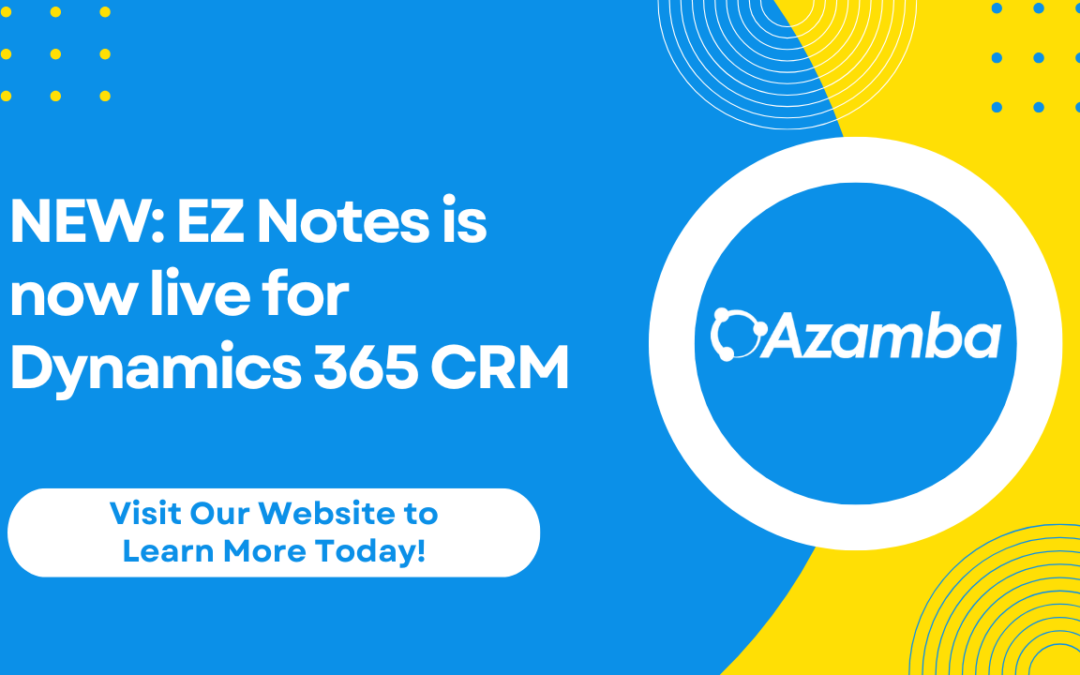4 Common Causes of CRM Scope Creep
4 Common Causes of CRM Scope Creep
…and 4 surprisingly simple solutions
CRM is an incredibly powerful tool.
Depending on your business processes and needs, CRM can be a vital part of your sales, management, support, marketing, and/or accounting teams. And between in-house and third-party add-ons and integrations, you can heavily customize industry-leading CRM systems like Microsoft Dynamics 365 for Sales to morph them into exactly the tool your business needs.
“
Incrementally adding value to your CRM system is a feature, not a bug.
”
It’s no wonder, then, that CRM scope creep is such a common problem. In light of all the features and capabilities available to you with most industry-leading CRM systems, it can be easy to see CRM as a miracle cure and do too little to enable your project’s success.
It can be just as easy to get carried away by those features and capabilities and try to do too much, too fast.
Too many implementations get delayed or derailed as they sprawl beyond their intended scope. Given the time and resources needed to implement CRM and train users, the delays caused by CRM scope creep can have serious consequences for your business.
There are many causes of CRM scope creep, but in our experience, here are four of the most common problems, and four solutions that will help you manage or avoid those problems:
Problem #1: Not knowing what you need
Solution: Get input from stakeholders and build a requirements analysis before beginning your implementation.
One of the easiest ways to lose track of what you’re doing is to not know why you’re doing it in the first place. This is particularly common when trying to meet the needs of multiple groups of stakeholders. What sales needs from CRM is not the same as what management needs from CRM, or what marketing needs from CRM, and so on.
The trick, then, is to identify your stakeholders early, and then build a requirements analysis together. The purpose of a requirements analysis is to ensure your project fulfills your needs. What improvements must be made? What problems must be solved? What are your top priorities? What can or should be left for later?
Early input from stakeholders is crucial to building an understanding of your needs and preventing scope creep during implementation. Without such an understanding, you will be stuck trying to identify your needs on the fly. Under those circumstances, it’s very easy to miss something important or get bogged down in something unimportant.
Problem #2: Not setting clear goals
Solution: Use your requirements analysis to identify success factors and set clear objectives.
Setting worthwhile goals is about understanding what success looks like. What must your CRM system do for you, your team, and your customers in order for it to be an operational success? What kind of ROI must your CRM system generate in order for it to be a financial success?
Too often, goals get conflated with needs or assumed in plans. But they are distinct from both. A need is the before state, whereas a goal is the after state. A plan, on the other hand, is how you get from before to after.
Your goals are what you want things to look like after you execute your plan. It is therefore important to identify and prioritize the CRM features and functionalities that will meet your needs, and to consider the systems and stakeholders that must to be added to, replaced by, or integrated with CRM.
If you don’t paint a clear picture of your desired results, it will be practically impossible to prepare—let alone execute—a plan to achieve them, and your implementation project will be much more prone to scope creep.
Problem #3: Not having a (good) plan
Solution: Create a step-by-step action plan and timeline to implement the CRM features you need to achieve your goals, and include change management procedures.
Poor planning is a recipe for CRM scope creep or even implementation failure. All too often, we see businesses whose CRM implementation plans look a lot like the Underpants Gnomes’ profit chart from this classic South Park episode: Phase 1.) CRM; Phase 2.) ???; Phase 3.) Profit!
But it’s important to remember that CRM is not a plan; it is a tool. The plan is how you build or implement that tool, and what you do with it. Your implementation plan needs to be rigid enough to avoid a sprawling, directionless project, but flexible enough to allow for changes due to unforeseen needs.
Someone will want to add a feature or function to your implementation project once it’s begun. It’s inevitable. The key is to hold any change requests to the same standards that led you from needs to goals to plan. What need is the proposed change responding to? Why is that need important? Why was it initially overlooked? How will the proposed change meet that need? What does success look like? Will any other functions or stakeholders be impacted by this change?
Change requests will happen, but scope creep doesn’t have to. Establishing change management procedures reduces the number of requests while ensuring the important changes happen. And the better your plan is from the beginning, the better those mid-project changes will go.
Problem #4: Not understanding the complexity of the project
Solution: Start simple and build from there as you and your team master what you’ve got.
CRM offers so many valuable features. It’s easy to want to do too much too soon, to get too excited by what is possible and lose track of what is practical.
Our experience has taught us that most businesses should start as simply as possible with CRM while still generating value, and then gradually add functionality as they get more comfortable with their system and its capabilities.
Incrementally adding value to your CRM is a feature, not a bug.
Your CRM system is only as valuable as your team’s ability and willingness to use it. Starting small gives them time to master and buy into the system.
It also accounts for how rapidly your needs can sometimes change. In the Internet Age, business needs and processes are more dynamic than ever. Smaller, regularly-scheduled updates and enhancements account for this in a way that a massive, front-loaded implementation does not.
Keep your CRM implementation on track
Hopefully, this article has given you some insight into CRM scope creep and how it can be avoided. But the best way to avoid CRM scope creep is to work with an experienced CRM partner.
QuantaCRM has worked on more than 300 successful CRM implementations using our OnTrack CRM Success System, a structured approach to CRM implementation, training, and optimization that will help you avoid CRM scope creep while getting maximum value from your system.
Are you ready to learn more about how the OnTrack CRM Success System can help you succeed with CRM?
Azamba Launches EZ Notes: A Smarter, Simpler Way to Take and Manage Notes in Dynamics 365 CRM
Chicago, IL – [March 19th, 2025] - Are messy, disorganized notes wasting your team’s time and leaving critical details lost in the shuffle? Do you spend more time searching for information than acting on it? EZ Notes is here to end the frustration and take the chaos...
Powerful New Updates to Accelerate Sales for Microsoft Dynamics 365 CRM Users
Chicago, IL – [March 5th, 2025] – Azamba is excited to announce the release of EZ Buttons 3.1. This powerful CRM Add-On for Microsoft Dynamics 365 simplifies tasks and makes CRM a breeze to use. With this CRM Add-On, you will work faster and smarter with less...
Azamba releases EZ Buttons 3.0!
Chicago, IL – [November 20th] - We are thrilled to bring you EZ Buttons 3.0, a game-changing update packed with powerful tools to streamline your sales process and help you get more done, faster. With EZ Buttons, turn time-consuming, multi-step tasks into quick,...
Microsoft Dynamics 365 Business Central + CRM Integration Demo | Dynamics Deep Dive Series
In This Demo You Will Learn To: Personalize your CRM to focus on the data that matters most. Create custom dashboards to track critical metrics efficiently. Use data views to help your team make smarter, faster decisions. Simplify Your Sales Process with the Business...
How to Track Your Goals and Metrics in Microsoft Dynamics 365 CRM – Dynamics Deep Dive Series
In the fast-paced world of sales, efficiency and clarity in managing goals and activities are extremely important. Microsoft Dynamics 365 CRM is a transformative solution for sales teams looking to enhance productivity and smash their sales targets. Join experts Peter...
Why MSP’s Should add CRM to their Solution Portfolios
We’re entering a new era in CRM. All the old reasons for customers buying CRM are still valid. But the advent of AI is making the case for renewed interest in CRM. To modify an adage, “If it’s interesting to my customers, then it is fascinating to me!”. AI is...
Boost Your MSP Earnings with Strategic Partnerships
Time is money, we’ve been told since childhood. The idea is that people should focus their attention on the things that bring value to them, and avoid the things that don’t. Since time is a precious resource, it makes sense to try and maximize its utility as it’s the...
CRM Launch in 5 Weeks – Get Results Fast!
The CRM Struggle Is Real. But It Doesn't Have to Be. CRM is no longer a luxury. It’s an essential tool for businesses that want to stay competitive, responsive, and move fast. But for a lot of businesses, CRM quickly turns into a nightmare. Imagine this: You spend...
How Most CRM Projects Fail & Yours Won’t | CRM Strategy
Stop The Risk of Failure Before It Starts Did you know that, according to a Gartner study, between up to 70% of CRM implementations fail? If you're a small or medium-sized business, this can seriously impact your budget, and you could lose out on profitable...
Do This to Avoid Wasting Time and Money With Your CRM
CRM Strategy: The Key to Avoiding a Costly Mistake CRM can either be a game-changing investment for your business or a massive waste of time and money. The difference depends entirely on your approach. Like many businesses, you want to boost sales, increase customer...
David Marincic is Partner Experience Manager at Azamba. He also manages and edits Azamba publications and social media channels.
David believes in the importance of good planning, sound practice, effective communication, and continued education in order to get the most from any technology solution.
Related articles:

Azamba Launches EZ Notes: A Smarter, Simpler Way to Take and Manage Notes in Dynamics 365 CRM
Chicago, IL – [March 19th, 2025] - Are messy, disorganized notes wasting your team’s time and leaving critical details lost in the shuffle? Do you spend more time searching for information than acting on it? EZ Notes is here to end the frustration and take the chaos...

Azamba Launches EZ Notes: A Smarter, Simpler Way to Take and Manage Notes in Dynamics 365 CRM
Chicago, IL – [March 19th, 2025] - Are messy, disorganized notes wasting your team’s time and leaving critical details lost in the shuffle? Do you spend more time searching for information than acting on it? EZ Notes is here to end the frustration and take the chaos...



